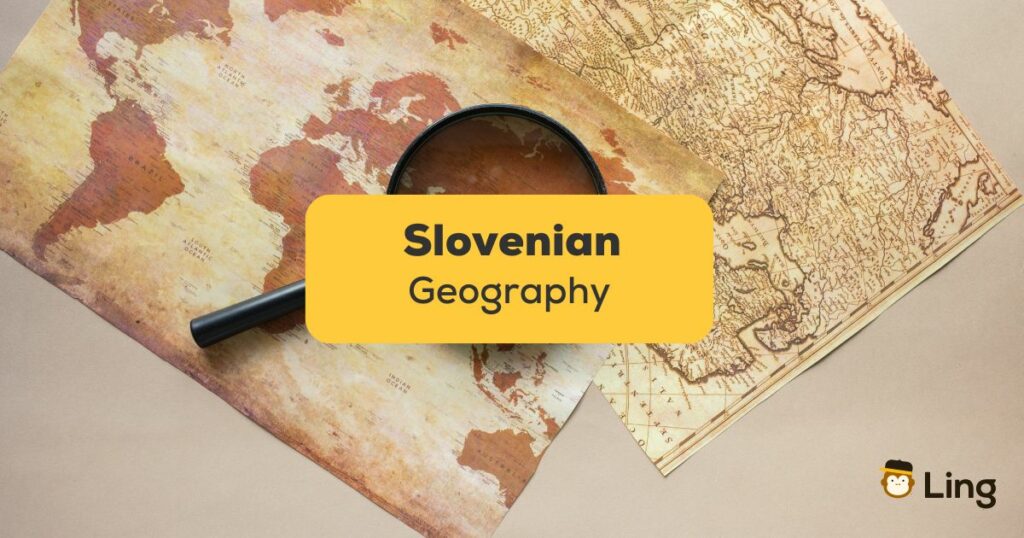Slovenia is a small, stunning country in the heart of Europe, ideal for those who love nature, adventure, and culture. In this blog post, we’ll be talking about the geography of Slovenia, exploring its areas and key spots.
Along with providing you with information about Slovenian geography, I’ll be adding some easy vocabulary – perfect if you’re learning Slovenian or simply interested in learning about the country. Let’s go!
Starting Off With Slovenian Geography Basics
The Republic of Slovenia is located in central Europe, on the border with Austria, Italy, Hungary, and Croatia. As one of the smallest countries in the European Union, Slovenia spans 20,273 square kilometers. Its diverse geography boasts lush forests, serene lakes, and charming coastal areas along its 46-kilometer coastline along the Adriatic Sea.
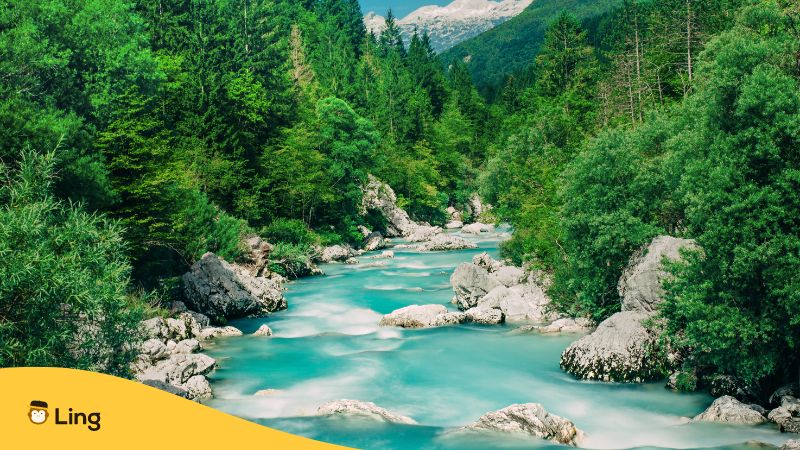
People Of Slovenia And Brief History
The Slovenes, a South Slavic group, arrived in the area in the sixth century. Their language, Slovenian, is much like other Slavic languages. Even under Austrian control for much of their history, Slovenes kept their language and cultural ways. Most live in the countryside, including the small capital city, Ljubljana. Though small, Slovenia is rich in culture, with a mix of influences from nearby countries giving it a unique feel.
The history of some places in Slovenia, especially from World War II, when it was part of the socialist federal republic of Yugoslavia, adds to the beauty of its diverse lands. The rough mountains were key spots for resistance fighters. For example, the Julian Alps were a haven for partisan groups, while small border villages show signs of wartime control. Knowing this history makes exploring Slovenia’s natural splendor even more meaningful!
Over the years, as Slovenia embraced its strategic location and diverse terrain, it became a bridge between Eastern and Western Europe, fostering trade and cultural exchange.
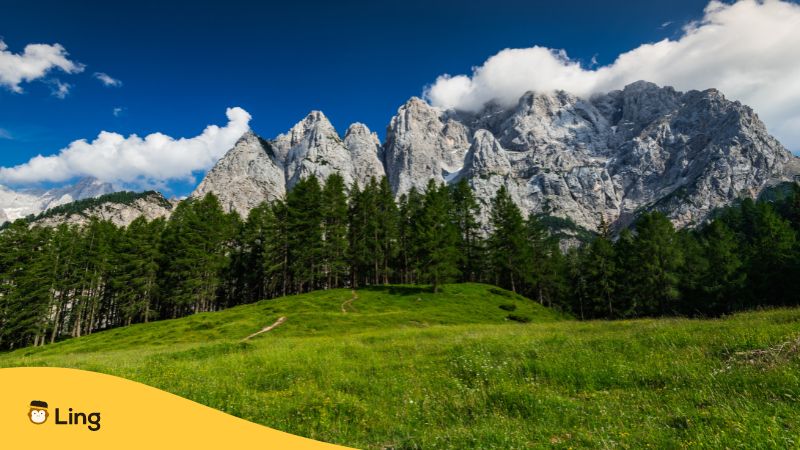
Slovenia’s Climate
Slovenia’s weather changes a lot because of its varied lands. The northwest has an Alpine climate with lots of rain. Alpine valleys have warm summers but cold winters. On the other hand, the coast and much of the southwestern region have a Mediterranean climate, which is sunny most of the year and has mild winters. Finally, Eastern Slovenia usually has a Continental climate with hot summers and cold winters. In July, inside temperatures go from 20-24°C, while coastal areas get around 28-30°C.
Spring starts on 21 March in Slovenia, bringing days that are cool and hard to predict. Temperatures start at about 9°C, warming to 17°C by June. Summer kicks off on 22 June, heating things up to around 30°C in the daytime. But the north, with its mountains, stays cooler. This season often brings storms and rain.
Fall comes on 23 September, cooling things down with wind and rain. Yet, September and October can still have dry and sunny days. Lastly, winter arrives on 21 December, with temperatures dropping below zero along with snow, especially in December and January. The mountain areas are colder during this time.
Slovenia’s Topography
Slovenia has varied lands, from high mountains to lovely valleys and coastlines along the Adriatic Sea. About 10% of the country is protected parkland.
The land is split into four main areas: the Julian Alps in the northwest, with high peaks and clear alpine lakes; the Kamnik-Savinja Alps in the north, full of stunning views and outdoor fun; the Pannonian Plain in the east, with gentle hills and rich soil for farming; and the Adriatic Coast in the southwest, where cute seaside towns and beautiful beaches are found.
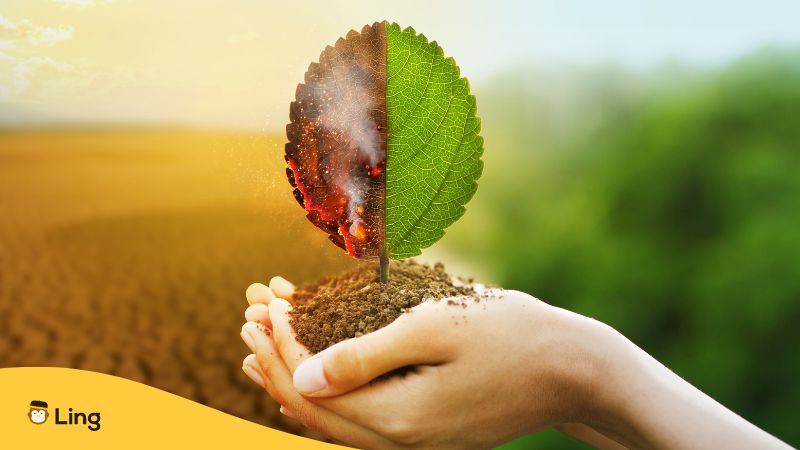
Slovenian Mountains
Slovenia is home to the alpine mountain region adjacent Italy and Austria called the Alps, which are divided into three ranges: the Julian Alps, the Kamnik Alps, and the Karawanks, a long mountain range dividing Slovenia and Austria. The Slovenian Alps are the most eastern part of the European Alps.
The biggest range is the Julian Alps – this is where you will find Mount Triglav, Slovenia’s largest mountain, at 2864 meters. This part offers some of the best views in the entire country. It’s a paradise for those who love the outdoors, offering trails for hiking, places for skiing, and spots for climbing.
The second largest range is the Kamnik Alps. Their tallest mountain is Grintovec, standing at 2558 meters. Along with amazing views, you can also experience a rich culture of shepherds and interesting wildlife!
Here are some words to know on this subject:
| English | Slovenian |
|---|---|
| Mountain | Gora |
| Hiking | Pohodništvo |
| Skiing | Smučanje |
| Summit | Vrh |
| Walking trail | Pohodna pot |
| Route | Smer |
Slovenian Coastline
Slovenia has a short coastal strip, just 46.6 kilometers along the Adriatic Sea. This area, called the Slovenian Riviera, is home to resort towns and beaches. Though short, the Slovenian coast is full of wonders.
Here, you’ll find the Strunjan Cliff, the highest sea wall in the Adriatic, and the Sečovlje Salt Pans. Coastal towns like Piran, Portorož, Koper, and Izola are filled with lots of history and charm. The coast is perfect for water sports, while hills inland call out to cyclists. Plus, Strunjan and Portorož have natural spas for rest and healing!
Words to know:
| English | Slovenian |
|---|---|
| Coast | Obala |
| Beach | Plaža |
| Cliff | Klif |
| Bay | Zaliv |
| Peninsula | Polotok |
| Cape | Rt |
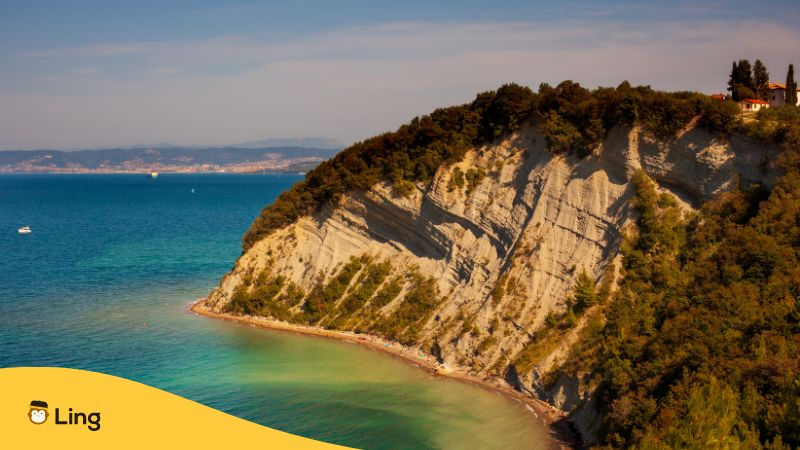
Slovenian Karst
A kind of landscape can be found in Slovenia where certain types of rock, such as limestone, are dissolved over time. This creates holes, caves, and underground rivers. That’s what we call karst!
The Karst region of Slovenia has been key to understanding karst landscapes worldwide. Each year, explorers find over 8000 caves. Postojna Cave is the biggest and most visited, also famous for its unique species – the human fish! Also, the Škocjan Caves are a UNESCO site and awe visitors with their beauty.
Words to know:
| English | Slovenian |
|---|---|
| Karst | Kras |
| Cave | Jama |
| Underground river | Podzemna reka |
| Human fish | Človeška ribica |
| Size | Velikost |
| Beauty | Lepota |
Slovenian Plains
The thermal Pannonian Slovenia is known for its healing waters and peaceful retreats. Among hills dotted with arable land for vineyards, you’ll find health resorts that offer rest and renewal. The local food, from welcoming farms, only adds to the area’s appeal! Here, you can explore castles and learn about Europe’s noble past.
| English | Slovenian |
|---|---|
| Vineyards | Vinograd |
| Wine | Vino |
| Farm | Kmetija |
| Arable Land | Obdelovalne površine |
| Castle | Grad |
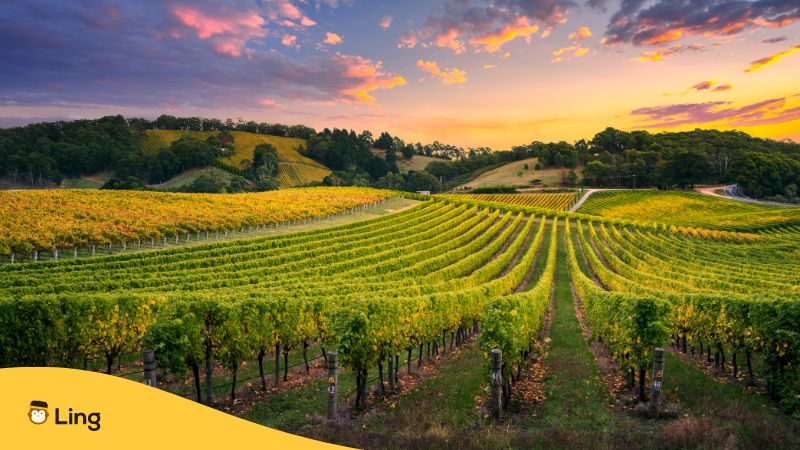
Slovenia’s Natural Spots
Slovenia has lots of natural spots that show off the country’s amazing beauty and rich range of nature.
Lake Bled
One of the most known spots in Slovenia, Lake Bled is a beautiful lake with green hills around it and an old big castle on top. You can ride a traditional boat to a small land with a church in the middle of the lake.
| English | Slovenian |
|---|---|
| Lake | Jezero |
| Island | Otok |
| Church | Cerkev |
Triglav National Park
With Mount Triglav at its heart, this national park is Slovenia’s only one of its kind, full of wild mountains, untouched forests, and clear lakes. It’s a perfect place for outdoor lovers, with trails, mountain huts, and breathtaking views.
| English | Slovenian |
|---|---|
| National Park | Narodni park |
| Forest | Gozd |
| Mountain hut | Planinska koča |
Soča River
Among numerous rivers, one shines bright – the Soča River, known for its emerald green waters. It’s a loved spot for rafting and offers an incredible view of the Julian Alps.
| English | Slovenian |
|---|---|
| River | Reka |
| Gorge | Soteska |
Capital City Of Ljubljana
Slovenia’s capital, Ljubljana, is vibrant with art, history, and places to eat. In the car-free city center, spots like Ljubljana Castle, the Triple Bridge, and the Dragon Bridge are must-see spots!
| English | Slovenian |
|---|---|
| Capital | Glavno mesto |
| Old City center | Staro mestno jedro |
| Landmark | Znamenitost |
| Bridge | Most |
Want To Learn More About Slovenian Culture And Language?
Ready to visit Slovenia, but you’re worried about the language barrier? Ling’s here to help!
The Ling app is perfect for learning Slovenian on the go or improving your language skills for your next trip. Whether you’re learning Slovenian at beginner level or advanced, Ling has excellent lesson plans for everyone! It makes learning new words easy and fun, with lots of lessons on 60+ languages. So download it from the App Store or Play Store and start your language journey today!
